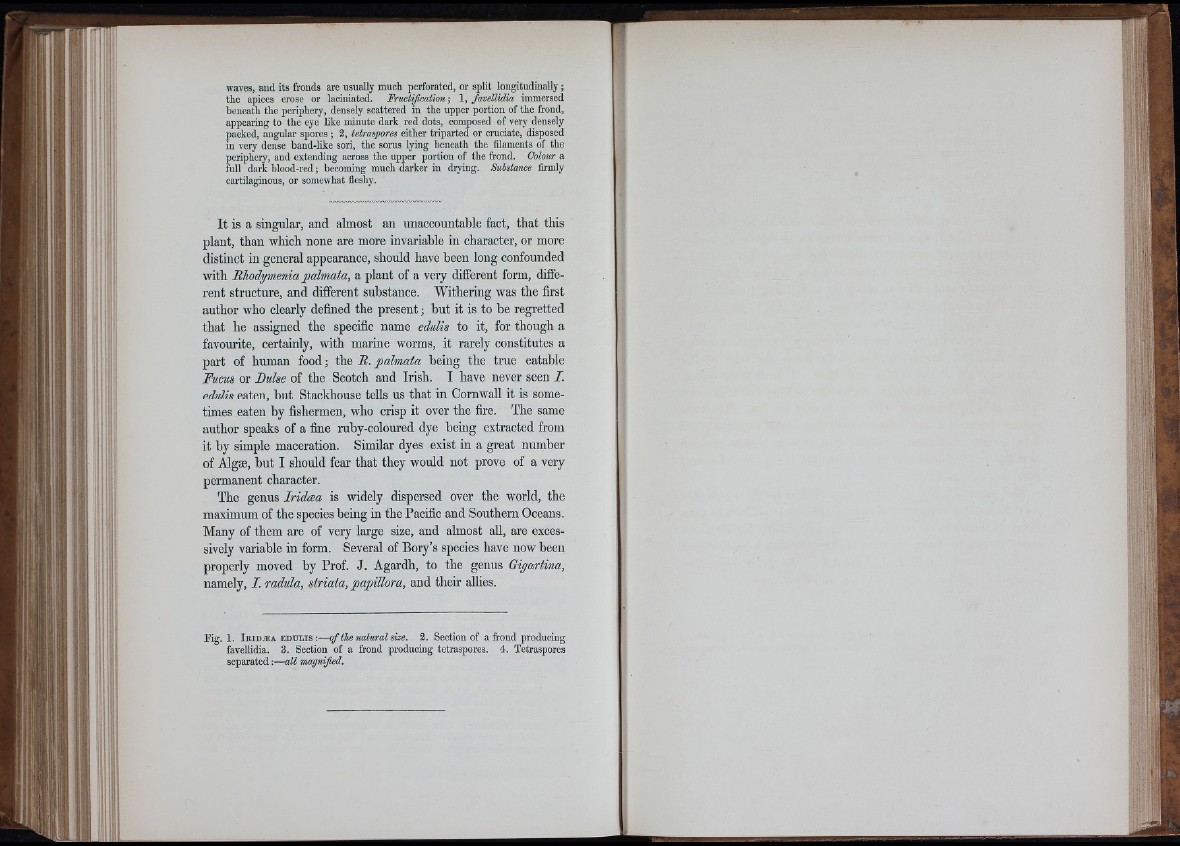
!î ! ï
1 4
4 a ■
4 il:
waves, and its fronds are usually much perforated, or split longitudinally;
the apices erose or laciniated. Fructification-, 1 , favellidia immersed
beneath the periphery, densely scattered in the upper portion of the frond,
appearing to the eye like minute dark red dots, composed of very densely
packed, angular spores ; 3, tetraspores either triparted or craciate, disposed
in very dense band-like sori, the sorus lying beneath the filaments of the
periphery, and extending across the upper portion of the frond. Colour a
full dark blood-red; becoming much darker in drying. Substance firmly
cartilaginous, or somewhat fleshy.
It is a singular, and alnaost an unaccountable fact, tbat this
plant, than which none are more invariable in character, or more
distinct in general appearance, should have been long confounded
with Bliodymenia palmata, a plant of a very different form, different
structure, and different substance. Withering was the first
author who clearly defined the present ; but it is to be regretted
that he assigned the specific name edulis to it, for though a
favourite, certainly, with marine worms, it rarely constitutes a
part of human food ; the B. palmata being the true eatable
Fucus or Dulse of tbe Scotch and Irish. I have never seen I.
edulis eaten, but Stackhouse tells us that in Cornwall it is sometimes
eaten by fishermen, who crisp it over the fire. The same
author speaks of a fine ruby-coloured dye being extracted from
it by simple maceration. Similar dyes exist in a great number
of Algæ, but I should fear that they would not prove of a very
permanent character.
The genus Iridæa is widely dispersed over the world, the
maximum of the species being in the Pacific and Southern Oceans.
Many of them are of very large size, and almost all, are excessively
variable in form. Several of Bory’s species have now been
properly moved by Prof. J. Agardli, to the genus Gigartina,
namely, I. radula, striata, papillora, and their allies.
F i g . l . I r i d æ a EDDLis :— o f the natural size. 3. Section of a frond producing
favellidia. 3. Section of a frond producing tetraspores. 4. Tetraspores
separated ;—all magnified.
%
■ V4.
I